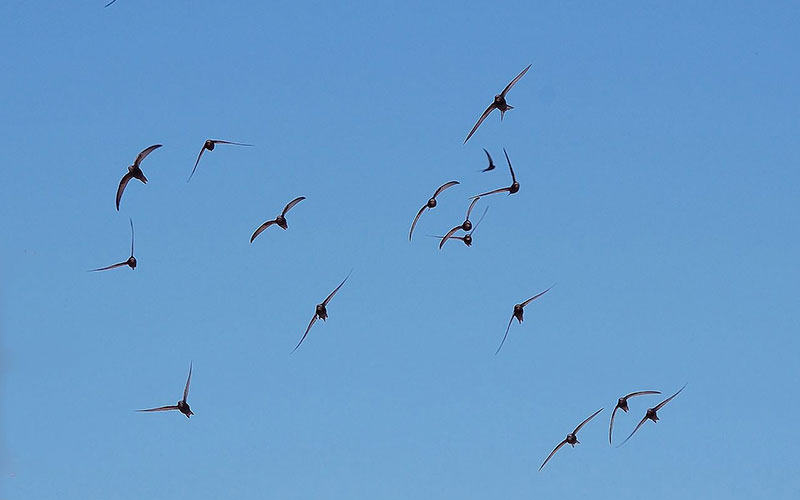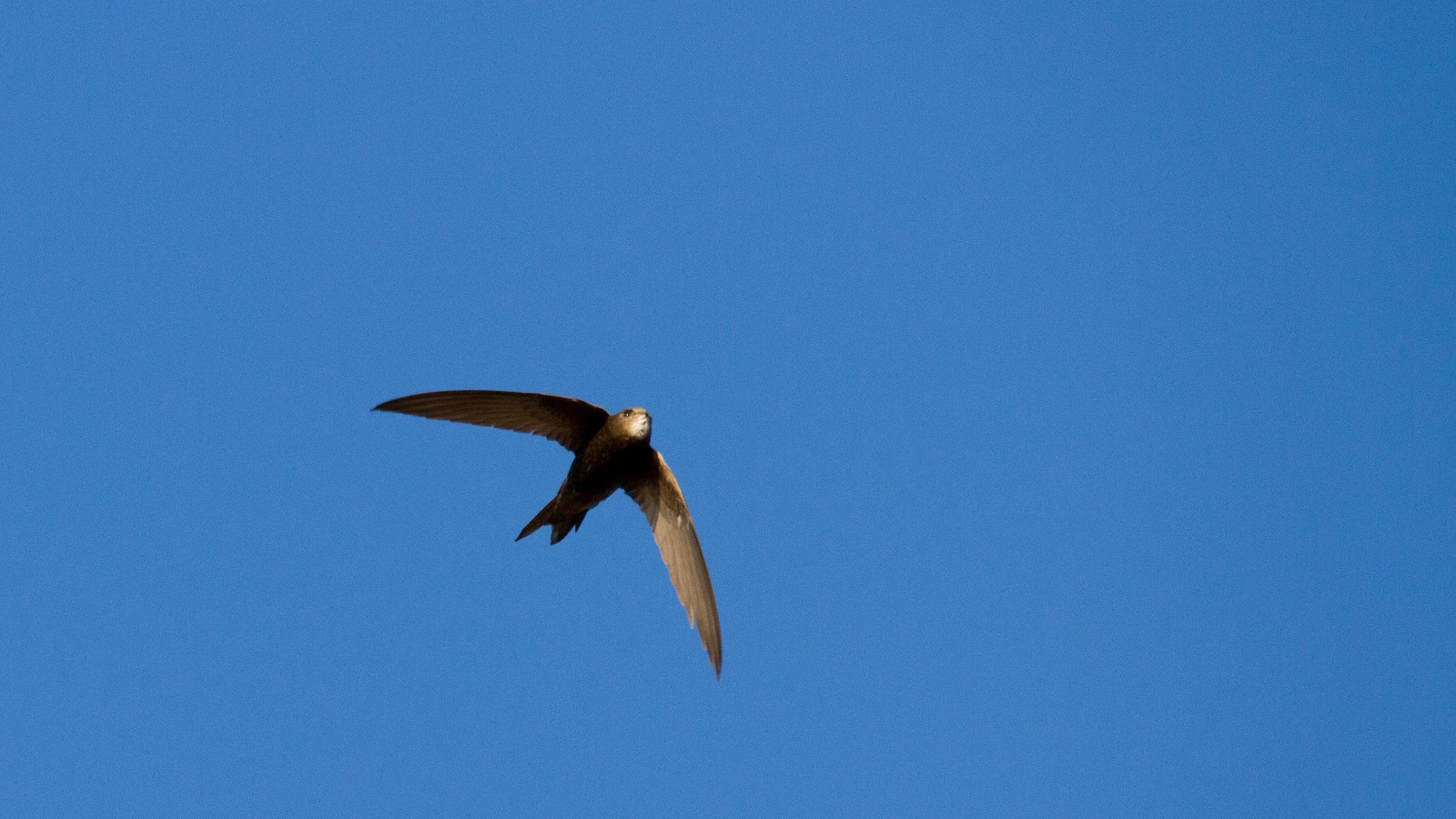How can swifts sleep in flight?
A naturalist in the Gulbenkian Garden
The most common species of swifts are the black swifts (Apus barbatus) and the pale swifts (Apus pallidus), “birds with a peculiar and surprising way of life”. Often mistaken for swallows, “they literally live over our heads, in cities and villages, inside the roofs of our homes”, describes Ricardo Brandão, a veterinarian and the coordinator of the Centre for Ecology, Recovery and Surveillance of Wild Animals (CERVAS) and Daniela Costa, a veterinary nurse.
According to the two veterinarians responsible of the centre located in Gouveia, in the Serra da Estrela National Park, t about this time of year, we can see and hear these small birds because “their ‘screams’ during strident pursuits are part of our urban soundscapes during the hottest months”.
What many people are unaware of is that swifts spend most of their life flying, even when they are asleep. They manage to do so without having an accident because they “don’t sleep continuously”.
At night “they rise to altitudes of up to 2000 metres, taking advantage of hot air masses”, where they are safe, avoiding bumping into roofs, building facades and other structures. “They have wing beats of four seconds followed by periods of rest of three seconds, which serve as intermittent rest periods”.
All of this takes place as they continue to fly at about 20 km/hour, gliding in currents of air, and as they rest at night at high altitudes, predators such as owls and hawks have a difficulty hunting them.
The truth is that the bodies of these insectivorous birds are specially adapted for flight. “Their silhouette resembles a bow and arrow. The head is well hidden between the shoulders, the wings are sickle-shaped and the body looks like a torpedo.” That’s why they can reach speeds of up to 100 km/h and are considered the world’s fastest birds, in continuous flight.

Swifts hunt when they are in flight, usually at more moderate speeds, in order to choose their favourite foods. “With their huge mouth they can hunt more than five hundred different species of insects, of different sizes and shapes, and even spiders on webs suspended in mid-air.”
This is also how they collect materials to build their nests, taking advantage of everything they collect, including dried herbs and feathers, which they then mix with saliva. It is in the air that they often mate and perform all other tasks, such as cleaning their feathers or drinking water which they do “on low-lying flights over rivers and ponds”.
They only land to shelter from heavy rains and prolonged storms, sheltering in nests or other shelters but they can only endure a maximum of three to four days without eating. Another break in flight occurs when they take care of the young after they are born. In the first 10 to 15 days of their life, “one of the adults (or even both) remains in the nest at night.”
Young swifts will remain sheltered for almost a month and a half. Then, the very first time they take off, “they immediately become independent of their parents and will never return to their nest, beginning their migration to Africa almost immediately.” For at least two years, they will continue to fly a total of 50,000 km without any breaks.
“If we take into account that the life expectancy of a swift can reach up to 21 years (they usually live just four to six years), they travel distances as far as flying to moon and back, several times.”
If you find a juvenile swift lying on the ground in the coming months, the best thing to do is to put it in a perforated cardboard box and immediately contact the nearest wildlife recovery centre and take it there. Do not feed or give water to the little bird, warn Ricardo Brandão and Daniela Costa.
Read more about the Black Swift, a bird that can be found in the skies above the Gulbenkian Garden.

